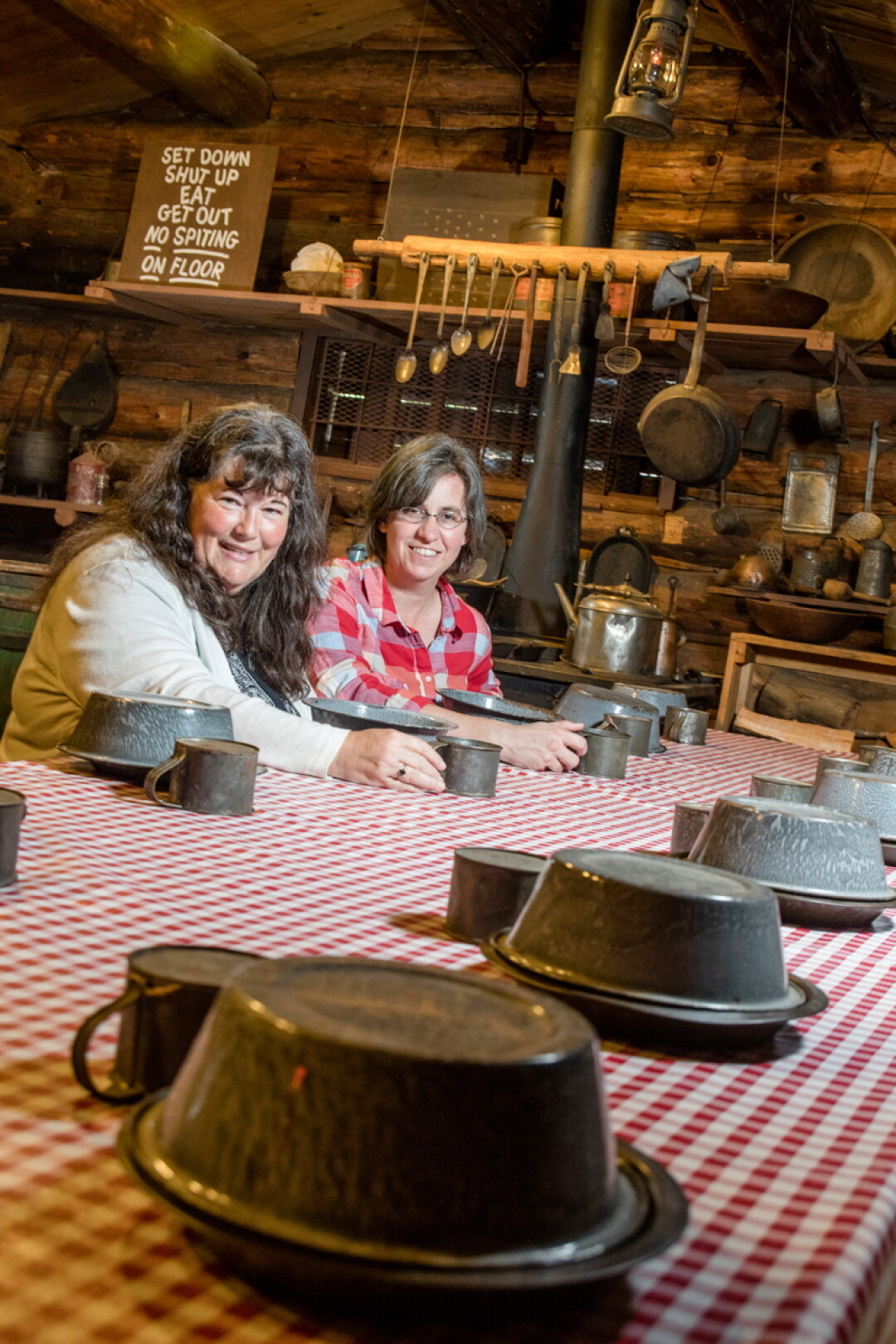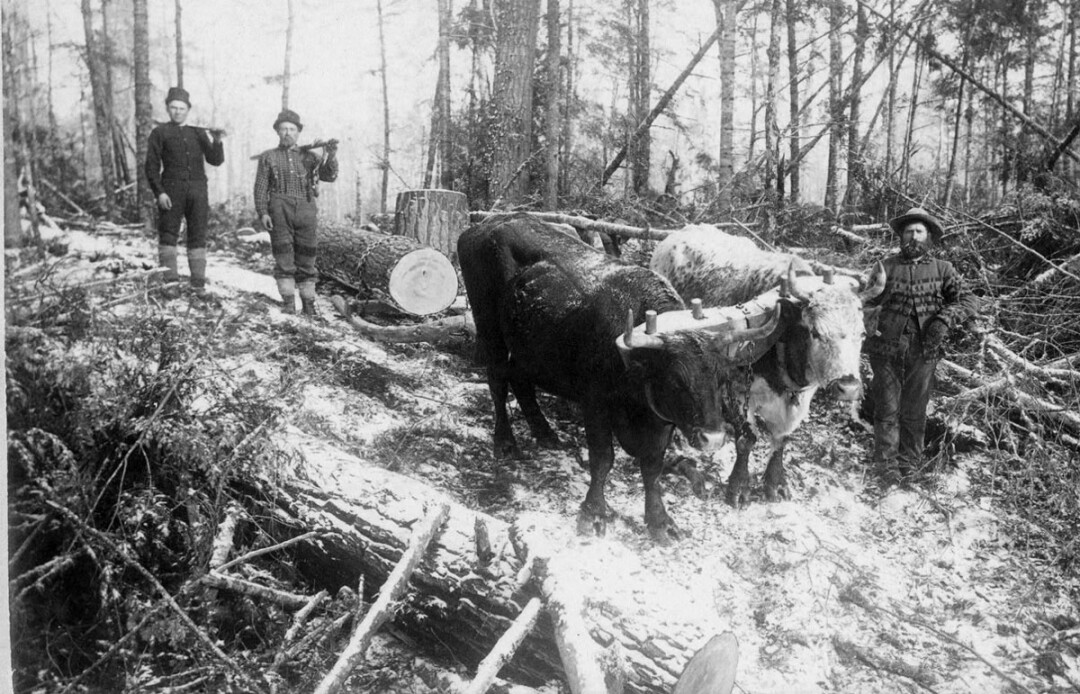Tales of Timber
museum directors recount logging history in photos
Barbara Arnold, photos by Andrea Paulseth |

Long before chainsaw carving competitions (let alone chainsaws) existed, choppers, sawyers, and loggers ruled Wisconsin. In the 1840s, five-sixths of northern Wisconsin was covered with trees, primarily white pines, many of them 200 feet high and 300 years old. Many lumbermen moved west to Wisconsin and Michigan in the 1850s after their sources of timber was depleted back East. By the 1870s, Eau Claire was a booming sawmill city that depended on the steady supply of logs cut from the northern forests. And by 1920, tree stumps and abandoned lumber camps dotted the once-lush forests.
“Some of our logging history gets lost, and books like this provide that retelling of the history to keep it alive with younger generations.” – Diana Peterson, co-author of Logging in Wisconsin
So when Arcadia Publishing, a prominent local history publisher in the United States, called Diana Peterson, executive director of the Paul Bunyan Logging Camp Museum, in July 2016, and asked her if she would be interested in writing a book about logging in Wisconsin, her answer was “yes” with a “but.”
“I wanted to collaborate with someone, and my first thought was Carrie Ronnander, executive director of the Chippewa Valley Museum, my next door neighbor in Carson Park,” Peterson said. “Fortunately, Carrie said yes.”
Ronnander became executive director at the history museum in 2015 after working as curator there for 16 years. She was in charge of the museum’s most recent major exhibit, “Changing Currents: Reinventing the Chippewa Valley.” The permanent exhibit, which opened in late 2014, covers 350 years of history, spans a third of the exhibit space of the museum, and took six years to complete.
A year later, on July 11, the Logging in Wisconsin books arrived from the publisher just in time for the release party. The 127-page pictorial history book tells the story of the logging industry in the state over an 80-year period, from its rise in the 1840s to its decline in the 1920s. Each of the six chapters starts with a page chock full of information followed by photos – 200 in all – captioned in minute detail with the people identified whenever possible. The book’s first chapter asks “Why Wisconsin?” (the answer: it had a lot of trees prime for the lumber industry) and then leads the reader through subsequent chapters entitled “The Cast of Characters,” “Life in a Logging Camp,” “Tools of the Trade,” “A Trip Down the River,” and “The Cutover and Conservation Efforts.”

While the two museums had already collaborated on advertising and tours, this is the first time the two executive directors have joined forces to produce a book. “Diana did the initial outline, captions, and intros, and I used the outline to select an initial round of photos,” Ronnander shared. “Since I had recently worked on the ‘Changing Currents’ exhibit, I had already identified a number of quality logging photos before the idea of the book was even brought up.”
Ronnander reviewed approximately 2,000 photos: 900 from the Chippewa Valley Museum’s collection and the rest from other local history collections both within the Chippewa Valley and across the state.
“My criteria for making the cut for the book was first and foremost, the quality of the print or negative and the clarity and crispness of the image,” Ronnander noted. “Secondly, I considered the emotional element in the photo, i.e., whether or not the photo spoke to me. I preferred photos that showed people doing something beyond posing, such as mock fighting, holding a dog in a group photo, washing clothes, eating, or even standing in water.”
Based on their positive experience the first time around, Peterson and Ronnander will likely collaborate on a book or another project soon. “This was the perfect project to bring both of us and our museums together because we could so equally share the work and resources,” Ronnander said.

Peterson agreed. “Some of our logging history gets lost, and books like this provide that retelling of the history to keep it alive with younger generations.”
Co-authors Diana Peterson and Carrie Ronnander will discuss Logging in Wisconsin and the historic photos it contains at 7pm Tuesday, Sept. 19, at the Volume One Gallery, 205 N. Dewey St., Eau Claire. The book is available at the Chippewa Valley Museum, the Paul Bunyan Logging Camp Museum, and The Local Store.


















